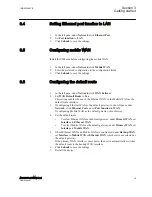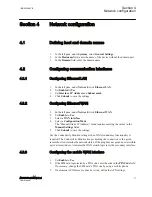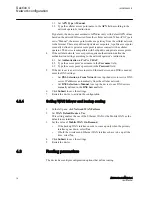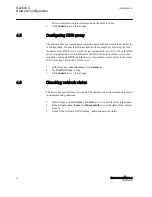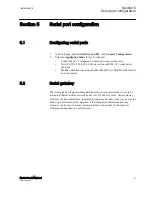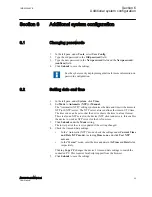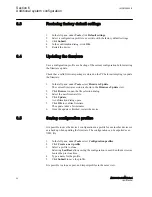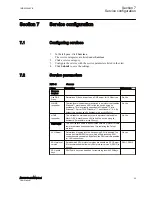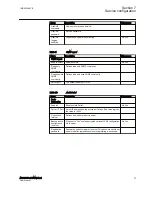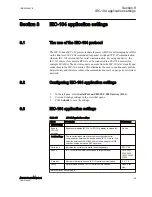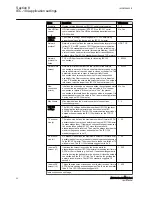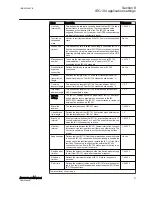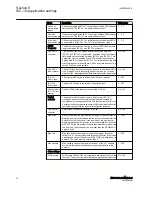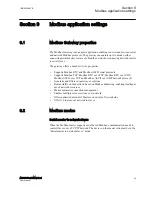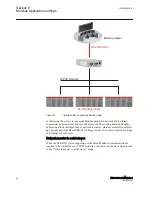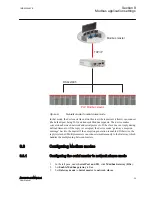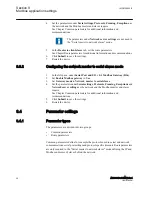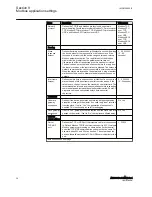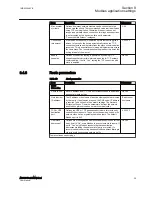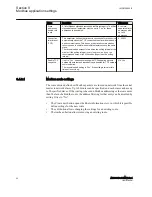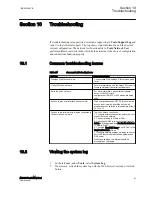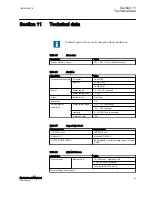
Section 8
IEC-104 application settings
8.1
The use of the IEC-104 protocol
The IEC-104 and IEC-101 protocols share the same ASDU level messaging but differ
on the link level. IEC-104 is intended for packet-switched TCP/ IP communication
whereas IEC-101 is intended for serial communication. By using the device, the
IEC-101 slaves (for example RTUs) can be connected to a IEC-104 master (for
example SCADA). The device requests an event from the IEC-101 slave locally and
sends them to the IEC-104 master. This eliminates the need to continuously poll the
data remotely and therefore reduces the communication costs on pay-per-use wireless
network.
8.2
Configuring IEC-104 application settings
1.
In the left pane, select
Serial Port and I/O/IEC-104 Gateway (RSx)
.
2.
View and change settings in the view that opens.
3.
Click
Submit
to save the settings.
8.3
IEC-104 application settings
Table 11:
IEC-104 application settings
Name
Description
Value range
Basic settings
Enable
IEC-104
gateway
Enables or disables IEC-104 to IEC-101 gateway functionality.
No, Yes
Serial settings
The serial settings define the properties of physical serial
communication between the device and an IEC-101 slave. The
selection between RS-232/422/485 is made with physical DIP
switches located below the RS2 serial port.
Serial port
Indicates the serial port to which the settings apply.
RS1, RS2
Speed
IEC-101 serial communication speed (bits per second)
1200, 2400,
4800, 9600,
19200, 38400,
57600
Data bits
Number of data bits used on IEC-101 serial communication
5, 6, 7, 8
Parity
Parity method used on IEC-101 serial communication
None, Even,
Odd
Table continues on next page
1MRS758460 B
Section 8
IEC-104 application settings
ARG600 Dual SIM Variant
29
User Manual

